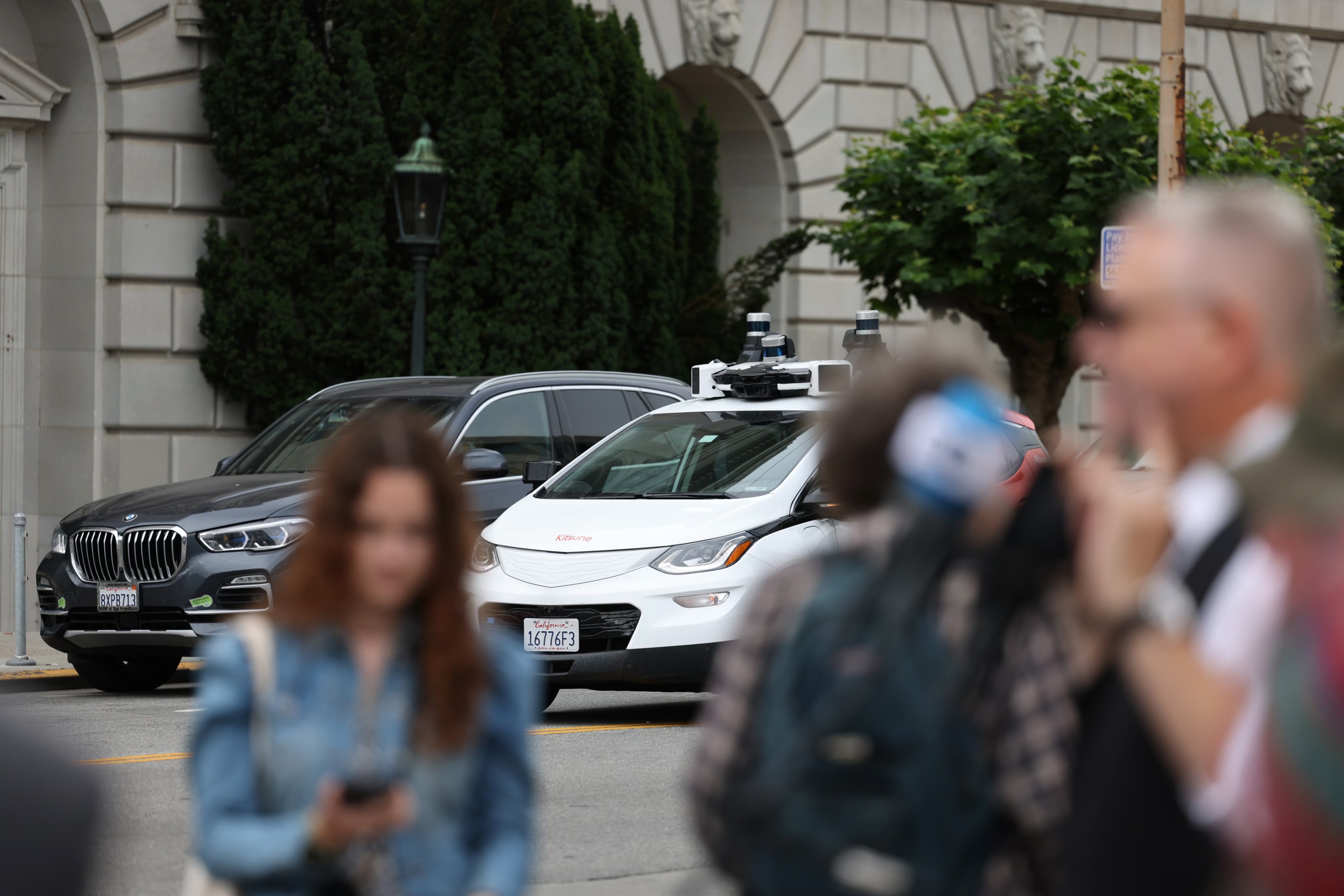The Standard’s Joshua Bote answers a reader-submitted question about how pedestrians can have confidence that robotaxis will yield appropriately to keep people safe.
Uncertainties about San Francisco’s driverless car future are abundant. Tensions flared this month between the San Francisco Fire Department and autonomous vehicle maker Cruise following an incident in which an individual was fatally struck by a Muni bus. The city just filed a request to rehear the vote that permitted Cruise and Waymo to drastically expand their services in August; the California Department of Motor Vehicles ordered Cruise to halve its fleet in the weeks following that key approval.
Self-driving cars are now part of the city’s firmament and will remain so for the foreseeable future. For San Francisco residents, that can be a bit unnerving: One thing scarier than riding inside one of these driverless units for the first time is navigating around them as a pedestrian or biker.
But Billy Riggs, a University of San Francisco business professor and a driverless vehicle expert, assures that pedestrians can let their guard down a bit the next time they spot a Cruise or Waymo coming toward them. Riggs said robotaxis are designed to defer to pedestrians and bicyclists’ right of way and have 360-degree views and light detection and ranging technology to carefully parse out objects around them.
Waymo cars also have domes atop their vehicles to notify passengers, drivers and pedestrians that show a symbol to indicate what they’re doing, according to Waymo senior software engineer Anne Dorsey. Dorsey, who focuses primarily on pedestrians, bicyclists and other non-passengers interfacing with their cars, said, for instance, that the dome flashes an image of a passenger exiting a car to ensure bicyclists don’t get struck by the car door.
“Most people assume the automated vehicles can’t share the road with bikers and pedestrians, and that’s just not really the case,” Riggs said. “If anything, there’s more yielding. There’s more of a tendency to engage in yielding behaviors to cyclists and pedestrians than human drivers.”
Riggs, who was calling The Standard from a train on the way to the Netherlands, said that he was recently at a testing site in Belgium where someone tried to get themselves struck by a self-driving car on purpose to test its safety limits.
“I don’t want to say it’s impossible, but it’s near impossible [to] even do it when you’re trying to get [it] to force a collision,” Riggs said.
Of all the Cruise and Waymo incident reports filed with the National Highway Traffic Safety Administration and the California Department of Motor Vehicles in 2023, none injured a pedestrian, and only a handful hurt cyclists. (A Waymo that struck a pedestrian in 2021 to public outcry was in “manual mode,” meaning that a human driver was operating the vehicle at the time of the collision.)
The speed at which Cruise and Waymo vehicles operate is key to pedestrian safety. According to an AAA study from 2011, the average risk of severe injury to a pedestrian reaches a staggering 90% when the vehicle is operating at 46 mph. At 50 mph, the average risk of death reaches 75%.
Waymo and Cruise, according to their respective spokespeople, are programmed to adhere to city speed limits—so, unlike many human drivers, none of their vehicles edge over the speed limit.
“When we spent a year studying this is that people, riders, felt like because they were traveling more safe, they felt like they were slowing down traffic,” Riggs said. “They felt like they were part of making a more safe environment for pedestrians.”
The other anxiety that can arise with autonomous vehicles, Riggs said, is red-light right turns. For Cruise cars, it’s verboten—and Waymo vehicles do so less often, though they still make the occasional right-on-red in adherence with local driving laws. While right-turn-on-red crashes are exceedingly rare, at least according to an 1985 report to Congress from the National Highway Traffic Safety Administration, 93% of pedestrian and bicyclist crashes from a vehicle turning right on a red light resulted in injuries.
But if or when something goes awry, pedestrians’ options for recourse are limited. A Waymo spokesperson says that QR codes are affixed to every Waymo vehicle for first responders and pedestrians alike to use in emergency situations. Non-emergency pedestrian complaints can go to a contact form on the Waymo website. (Dorsey also says she has read user complaints on X, formerly Twitter, so user gripes on social media do get seen by someone at Waymo.) For complaints about Cruise vehicles, the company said to reach out to its community@getcruise.com help line.
Riggs’ advice to pedestrians? “Be assertive. Own your space on the road because the great part is these vehicles, they’re not going to drive aggressively. They don’t have emotions. They’re programmed. They’re not going to flip you off if you go in front of them.”
Correction: An earlier version of the story misstated the purpose of the QR code printed on Waymo vehicles.
